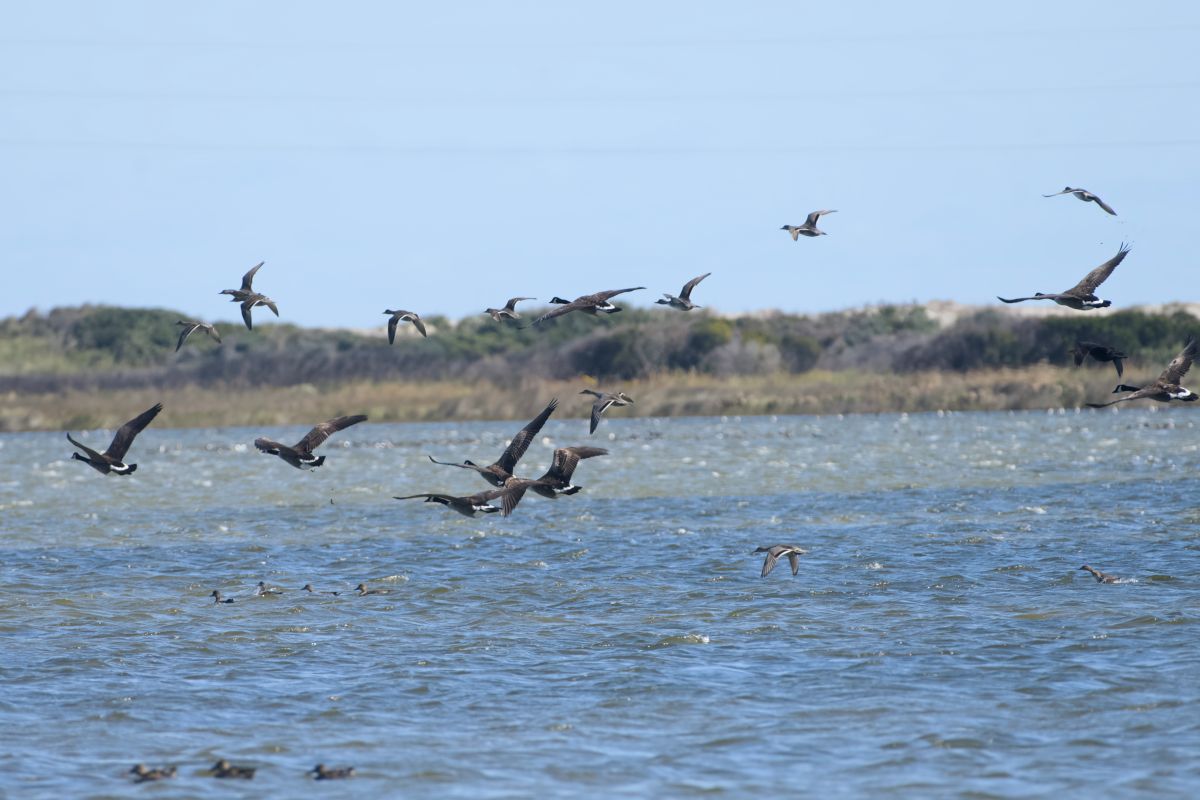To stimulate discussion and debate, Coastal Review Online welcomes differing viewpoints on topical coastal issues. See our guidelines for submitting guest columns. The opinions expressed here are not those of Coastal Review Online or the N.C. Coastal Federation.
The British mathematician and physicist Lord Kelvin, a foremost expert of his time, declared in 1895 that “Heavier-than-air flying machines are impossible.” Period. End of story. But about eight years later on North Carolina’s Outer Banks, the Wright brothers showed us that the experts and their predictions can quite often be wrong.
Supporter Spotlight
Every once in a while technologies come along that have the ability to change our world for the better, and they are almost always met with a mix of excitement, skepticism and fear. Think electricity, automobiles and computers as just a few examples.
Renewable energy is now one of those technologies. Wind and solar are already transforming our world and changing the way we power our lives while improving our environment and creating thousands of jobs in new industries. But they are also often met with that same mix of excitement, skepticism and fear. Offshore wind is a particularly interesting case study.

North Carolina is fortunate to have some undeniable advantages in offshore wind, including the largest resource on the East Coast, among the lowest construction costs in the nation, highly-skilled and competitive labor markets, and world class port facilities. The opportunities from offshore wind include both clean energy generation as well as attracting manufacturing and supply chain jobs to support this new U.S. industry, with many of those jobs needing to be located in coastal states.
These opportunities for clean energy and tens of thousands of jobs excite people. In fact, surveys consistently show 75 to 85 percent of people in North Carolina support offshore wind energy. So what’s the holdup?
Well, part of the reason is that even though there are almost 25 years of experience with offshore wind in Europe, this is new for us here in the United States, and that newness raises some questions. A common one is around tourism impacts. And like those previous technologies, the questions range from understandable concern due to lack of experience to overblown predictions of dire consequences by those opposing the new technology.
Supporter Spotlight
Let’s be clear about one thing — tourism is a major driver of our coastal economies that absolutely needs to be protected. On that point, there is broad agreement.
But a recent request from the N.C. Department of Environment and Natural Resources, or DENR, to the federal Bureau of Ocean Energy Management, or BOEM, to impose a statewide 24-nautical-mile exclusion zone for offshore wind, citing fear of tourism impacts, is misguided for a number of reasons.
First, it doesn’t protect tourism and could actually harm it. DENR cites four studies from New Jersey to support the request, but curiously only one actually looked at tourism. In that study, the negative effects estimated were for projects 3-6 miles offshore, but areas near Wilmington are already pushed out to 10 miles specifically to avoid visual impacts.
Both experience from Europe and studies in the United States, including the New Jersey study cited by DENR, suggest that wind farms 10 or more miles from shore could actually improve parts of the tourism economy, not harm it. That’s because wind farms can attract visitors, enable eco-tours and become fishing and diving hot spots. And according to a BOEM visualization study, at those distances the turbines would not even be visible from the shore most of the time, especially during the peak tourist seasons.

Second, the DENR request ignores the previous four years of work by local, state, federal and tribal stakeholders to identify areas for potential development and avoid areas of concern. Starting in 2010, BOEM has led a process to identify areas that avoid conflicts with things like sensitive environmental areas, commercial fishing, shipping and navigation, viewsheds and even shipwrecks. For example, over a million acres were excluded for military operations alone. It has not been a fast process, but it has been thorough, transparent and has identified low-conflict sites with good potential. An indiscriminate 24-nautical-mile exclusion zone would override years of work and effectively wipe out most of those current and future potential sites, all for little to no benefit.
Third, the request is not based on what other tourism-dependent states are doing. Most states are using 10 miles or less as a minimum distance, and some have projects proposed much closer to shore. Virginia’s areas are 25 miles offshore but that area was driven by military and shipping conflicts, not tourism concerns, and many stakeholders there would prefer options closer to shore.
Fourth, the practical effect of a 24-nautical-mile exclusion zone is that we would not see any development off of North Carolina for a long time. Pushing areas out that far imposes unnecessary cost burdens due to water depth and distance, likely driving development elsewhere.
Finally, it could prevent North Carolina from competing for the tens of thousands of supply chain jobs to support this new industry. Manufacturers will be attracted to states that embrace the industry, not those states that impose restrictions effectively banning offshore wind development in the near term.
Offshore wind is one of those once-in-a-generation economic opportunities to build an entirely new industry while protecting and enhancing our existing coastal industries like tourism, fishing, shipping and the military. Why would we kill it before it has a chance to get started?
History has told us time and again that for new technologies like electricity, automobiles, computers or even the first flying machines, there are always experts who say it wouldn’t pay off. Offshore wind is no different. But if we approach this opportunity with an open mind and make our decisions based on facts rather than fear, we just might embark on one of the next great industries to power our economy.







